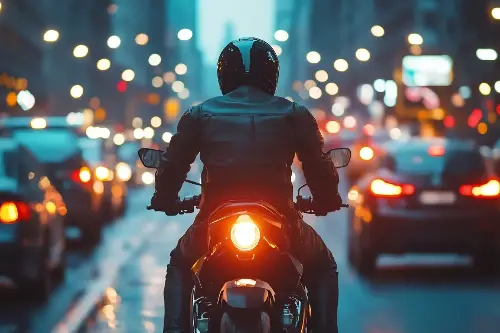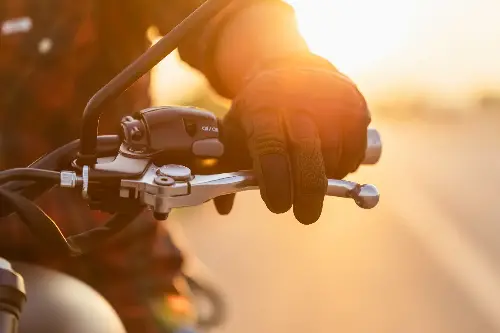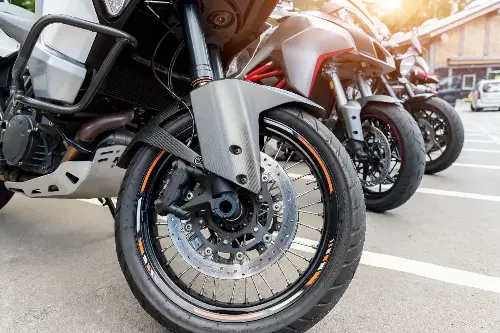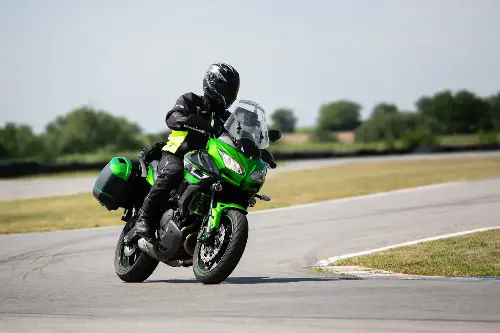The ability to brake effectively on a motorcycle isn't just a cornerstone of safe riding; it's an art form that, once mastered, can significantly enhance your road confidence. Interesting fact: the majority of motorcycle accidents are due to improper braking techniques, according to various road safety research studies. The following expert techniques are pivotal in ensuring every rider can achieve safe and smooth stops, regardless of their riding experience.

Understanding Motorcycle Braking Dynamics
The first step to becoming adept at motorcycle braking is to understand the dynamics. Unlike cars, motorcycles have separate controls for front and rear brakes, each playing a distinct role during braking. The front brake is more powerful and accounts for the majority of stopping force. A fact that some riders might find surprising is that it can provide upwards of 70% of the bike's stopping power. In contrast, the rear brake adds stability and prevents the bike from skidding.
When applied correctly, both brakes work together to bring the motorcycle to a controlled and effective stop. The trick is in mastering the distribution of braking force between the front and rear brakes, which can be influenced by factors like road conditions, speed, and the rider’s centre of gravity.
Mastering Smooth Gradual Braking
One common mistake riders make is applying the brakes too abruptly. Instead, gradual application is key. Begin with a light squeeze on the front brake lever and a gentle press on the rear brake pedal. As the motorcycle slows, progressively increase the pressure. This technique, often referred to as 'progressive braking', allows the weight to transfer to the front wheel, increasing traction and making it safer to apply more brake pressure as needed.

Maintaining the Right Posture During Braking
Body posture plays a significant role in maintaining control during braking. Keep your arms relaxed but ready to act and ensure your knees grip the tank. This will help you maintain stability and manage the forward momentum that occurs when decelerating. Additionally, looking ahead and not at the ground immediately in front of you will keep you alert to your surroundings and help you in bracing for the stop.
Practising Emergency Braking
Emergency stops are a critical skill for any rider to master and should be practised in a safe environment, like an empty parking lot. The objective is to stop the motorcycle as quickly as possible without losing control or causing a skid. The process is similar to smooth gradual braking, but the application is more rapid and forceful. Riders must learn to judge how much pressure they can apply without invoking a lock-up, which becomes easier with anti-lock braking systems (ABS).

Riding with Anti-lock Braking Systems (ABS)
ABS has become a game-changer in motorcycle safety. It prevents the wheels from locking up during hard braking situations, allowing riders to maintain steering control. If your motorcycle is equipped with ABS, take time to familiarise yourself with how it feels and operates. ABS can be particularly beneficial in slippery conditions, providing riders with an extra layer of security.
The Role of Tyres in Effective Braking
Tyres are the only point of contact your bike has with the road, making their condition and type critical to braking performance. Ensure they are correctly inflated and have sufficient tread to allow for optimal grip. Tyres designed for specific weather conditions, such as wet-weather tyres with adequate grooves, can dramatically improve braking effectiveness.

Dealing with Different Surfaces and Conditions
Every road surface offers a unique challenge when it comes to braking. Wet roads, gravel, or leaves require a gentler approach to braking, and the brake force should be more rear-biased to prevent front wheel skid. On the other hand, a dry, clean road allows for firmer and more front-biased braking.
Braking in Corners
Braking in corners requires finesse, as this is when motorcycles are most vulnerable to loss of traction. The general rule is to slow down before the turn, guiding the motorcycle with slower speeds and applying minimal braking pressure if needed. For advanced riders, trail braking—a technique where braking is carried through the beginning of the turn—can be mastered with time and practice.

Conclusion: Keep Practising and Stay Alert
The core of unlocking motorcycle braking confidence is practice, practice, and more practice. With every new skill or technique you integrate into your riding habit, you'll find your confidence on the road growing. Remember, good riders are always learning, evolving, and adapting their techniques to match the diverse set of conditions encountered on the road. Stay alert, stay safe, and enjoy the thrilling experience that is motorcycling with the assurance that you can bring your two-wheeled steed to a stop smoothly and safely, no matter what lies ahead on the road.
